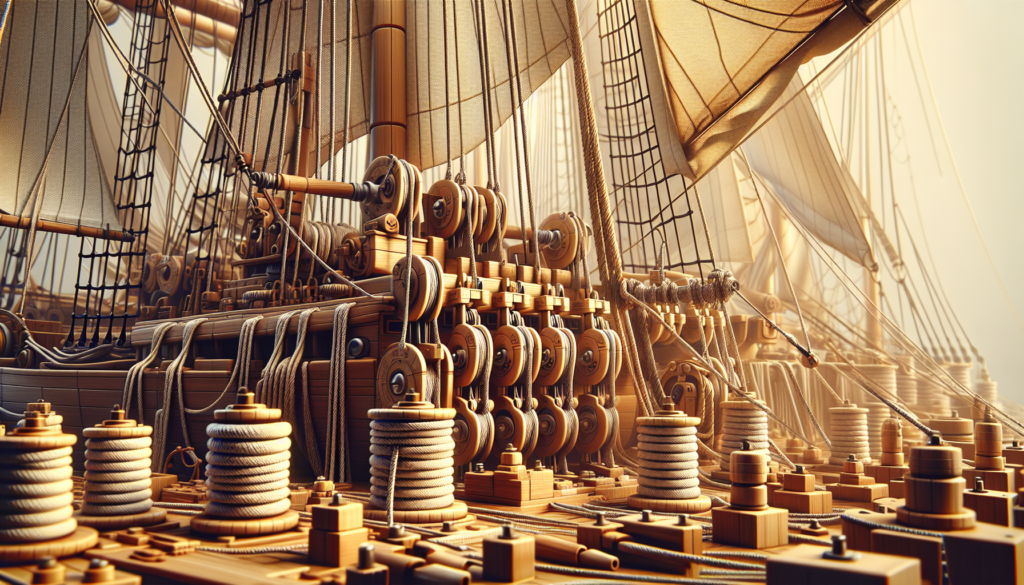Sailing Pulleys: Navigating the Seas of Innovation
When we envision sailing, we often picture billowing sails, majestic ships cutting through the waves, and the exhilarating feeling of harnessing the power of the wind. However, behind the scenes, there is a crucial component that plays a vital role in the mechanics of sailing – pulleys. Sailing pulleys are the unsung heroes of the maritime world, quietly aiding sailors in navigating the seas with precision and efficiency. In this comprehensive guide, we will delve into the world of sailing pulleys, exploring their history, functionality, applications, and future prospects.
The Evolution of Sailing Pulleys
Historically, pulleys have been an integral part of sailing for centuries, dating back to the ancient Egyptians who used simple wooden pulleys to hoist sails and lift heavy loads. Over time, advancements in technology and materials have transformed sailing pulleys into sophisticated instruments that enhance the performance of modern sailboats. Today, sailing pulleys come in a variety of designs, materials, and configurations, each tailored to specific sailing needs.
One of the key innovations in sailing pulleys is the introduction of ball bearing systems, which reduce friction and allow for smoother operation. By incorporating ball bearings into pulley blocks, sailors can efficiently adjust sail trim, control lines, and hoist sails with minimal effort. This advancement has revolutionized the sailing experience, making it more accessible and enjoyable for enthusiasts of all skill levels.

The Mechanics of Sailing Pulleys
At its core, a sailing pulley consists of a sheave (pulley wheel) mounted on a central axle, enclosed within a housing or block. The line or rope is threaded through the sheave, allowing it to move freely and change direction as needed. By utilizing multiple pulleys in a block system, sailors can create mechanical advantage, enabling them to exert less force while achieving greater control over sail handling.
When a sailor pulls on a line attached to a pulley block, the force is distributed evenly across the sheaves, reducing friction and making it easier to adjust the sails. This mechanical advantage is essential for efficient sail trimming, especially in challenging weather conditions where precision and speed are crucial. Additionally, pulleys allow sailors to redirect lines around obstacles, change the direction of forces, and distribute loads evenly, enhancing the overall performance of the sailboat.
Applications of Sailing Pulleys
Sailing pulleys are used in a wide range of applications on sailboats, from adjusting sail trim to operating rigging systems and handling heavy loads. One of the primary uses of pulleys is in sail handling, where they enable sailors to raise, lower, and adjust sails with ease. By incorporating pulley blocks into the rigging system, sailors can fine-tune the shape of the sails, control the tension of the lines, and optimize the performance of the boat in varying wind conditions.
In addition to sail handling, sailing pulleys are also utilized in rigging systems such as halyards, sheets, and vangs, where they play a critical role in controlling the mast, boom, and other sail components. Pulleys are essential for distributing loads evenly, reducing wear and tear on the rigging, and enhancing the overall safety and efficiency of the sailing vessel.

The Future of Sailing Pulleys
As technology continues to advance, the future of sailing pulleys looks promising, with innovations in materials, design, and automation shaping the landscape of the maritime industry. Lightweight materials such as carbon fiber and titanium are increasingly being used in pulley construction, reducing weight and increasing durability. These advancements have led to the development of high-performance pulley systems that offer improved efficiency, reliability, and longevity.
Furthermore, automation and digitalization are revolutionizing the way sailing pulleys are used and controlled. Electric winches, remote-controlled systems, and integrated sensors are providing sailors with enhanced capabilities and convenience, making sail handling more accessible and user-friendly. By incorporating smart technologies into sailing pulleys, sailors can monitor, adjust, and optimize their rigging systems with precision and ease, enhancing the overall sailing experience.
Expert Opinions
We had the opportunity to speak with renowned sailing expert, Captain Grace Lee, who shared her insights on the importance of sailing pulleys in modern sailboats. According to Captain Lee, “Sailing pulleys are the backbone of sail handling, allowing sailors to efficiently control their sails and navigate the seas with confidence. Their versatility, reliability, and ease of use make them indispensable tools for sailors of all levels.”
When asked about the future of sailing pulleys, Captain Lee emphasized the role of technology in shaping the industry, stating, “With advancements in materials and automation, sailing pulleys are becoming more efficient and user-friendly. I believe we will see a continued evolution of pulley systems that enhance the performance and safety of sailboats, making sailing more enjoyable and accessible to a wider audience.”
Common Misconceptions
Despite their importance, sailing pulleys are often overlooked or misunderstood by novice sailors. One common misconception is that pulleys are only used for heavy lifting or industrial purposes, neglecting their critical role in sail handling and rigging systems. In reality, sailing pulleys are versatile tools that enable sailors to control their sails, adjust rigging, and navigate with precision and ease.
Another misconception is that sailing pulleys are complicated or difficult to use, deterring beginners from exploring their capabilities. In truth, pulleys are simple yet powerful devices that enhance the sailing experience, making it more enjoyable and accessible for sailors of all skill levels. By understanding the mechanics and applications of sailing pulleys, sailors can harness their full potential and optimize their performance on the water.
Conclusion
To wrap things up, sailing pulleys are the unsung heroes of the maritime world, providing sailors with the tools they need to navigate the seas with precision and efficiency. From ancient wooden pulleys to advanced ball bearing systems, pulleys have evolved to meet the demands of modern sailboats, enhancing the sailing experience for enthusiasts around the world.
As we look to the future, the role of sailing pulleys will continue to expand, driven by innovations in materials, design, and automation. By embracing these advancements and understanding the capabilities of sailing pulleys, sailors can unlock new possibilities and elevate their sailing adventures to new heights. So next time you set sail, remember the humble pulley that quietly guides you through the winds and waves, making your journey a smooth and exhilarating experience.



